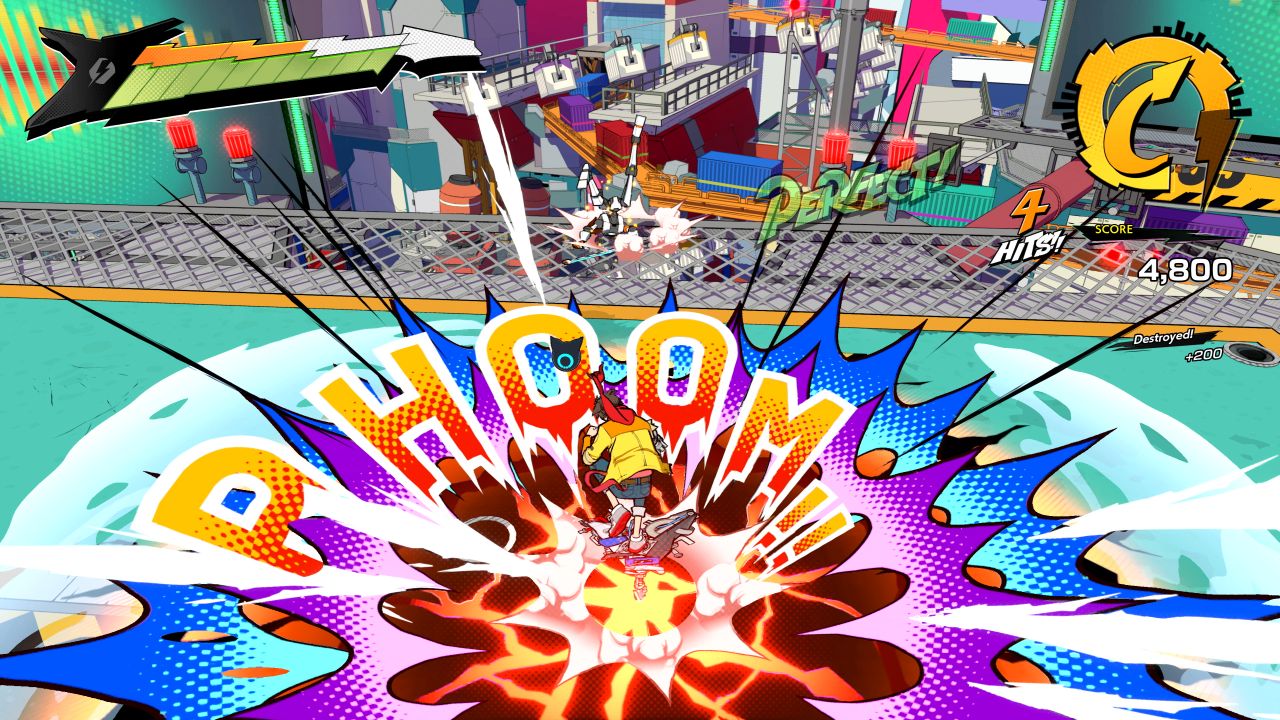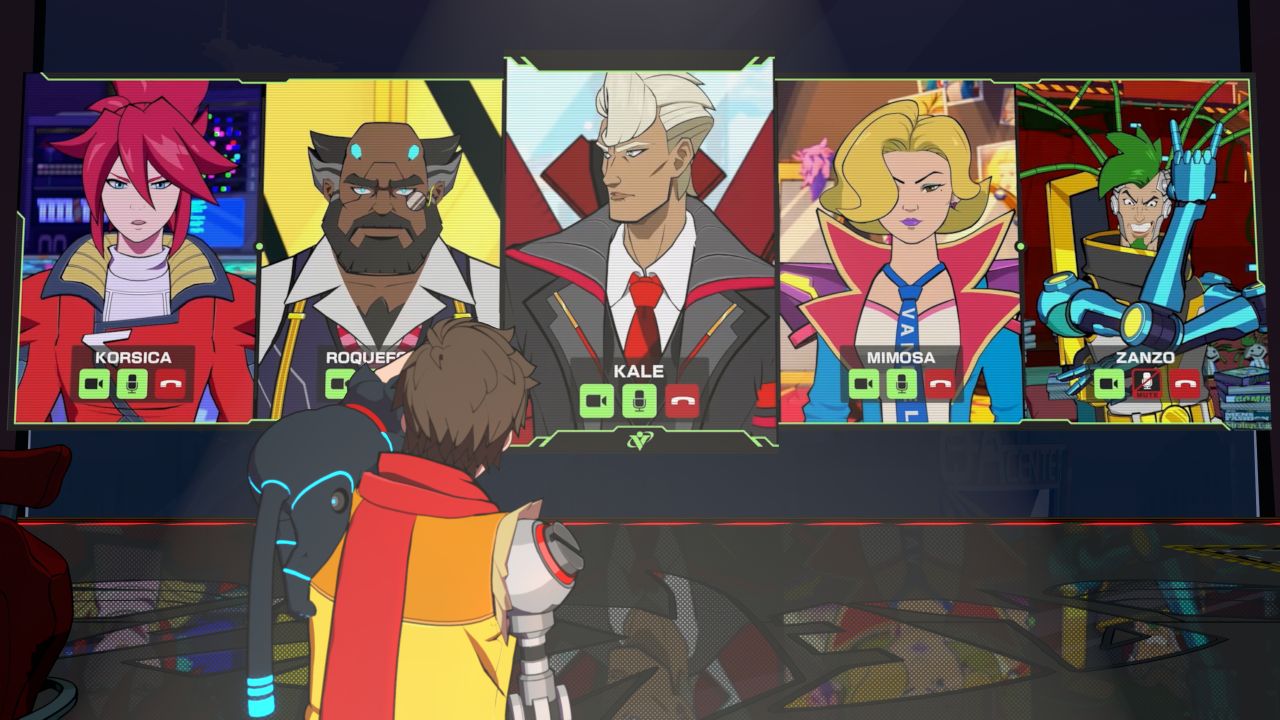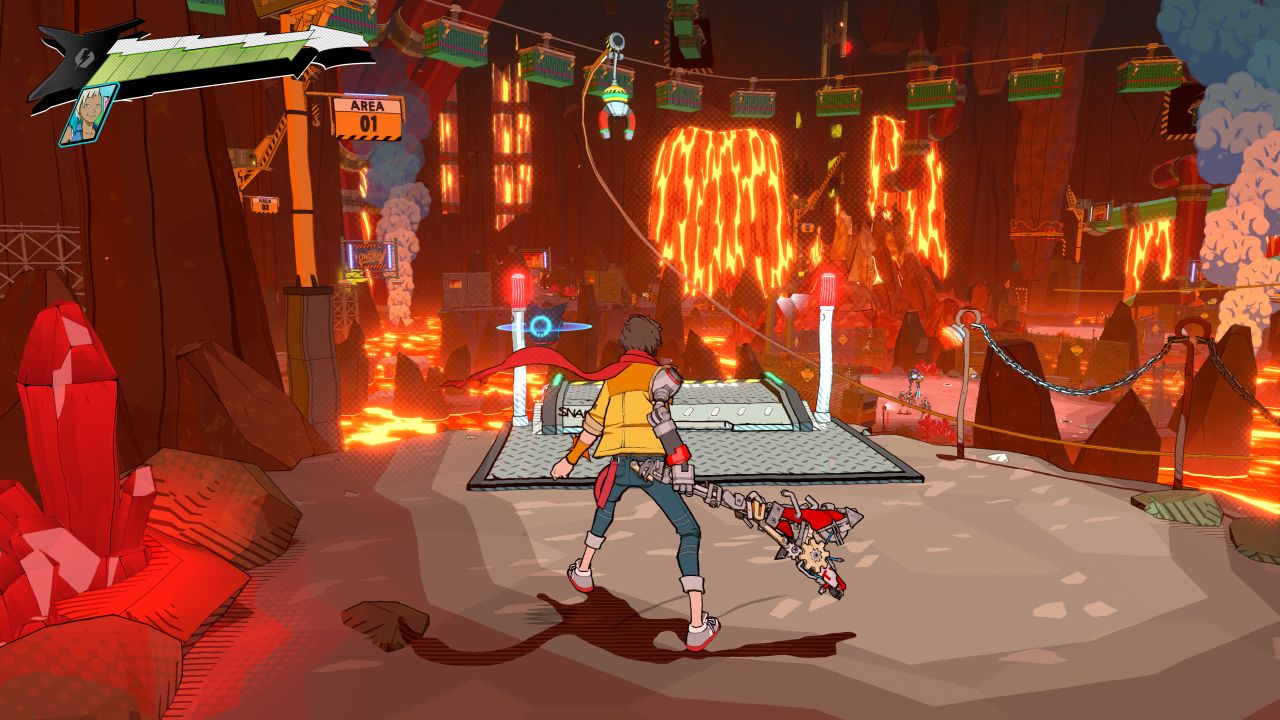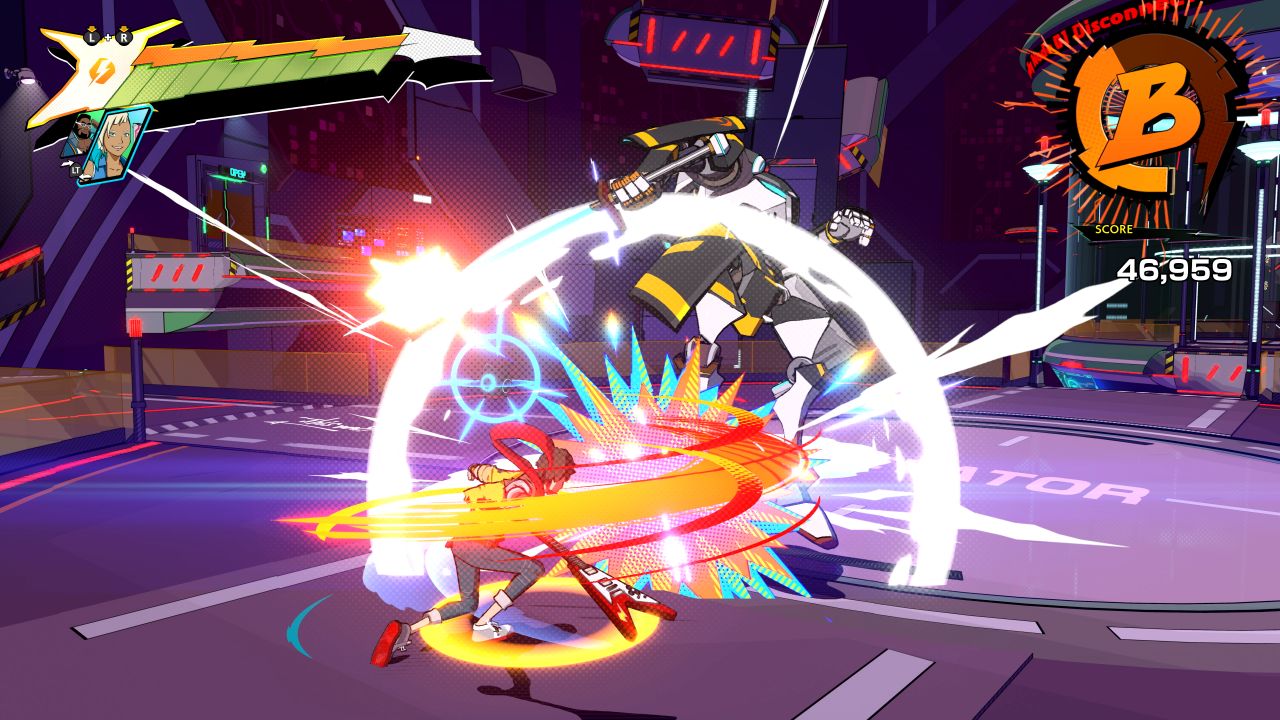Hi-Fi Rush Review
A fun action game with great visual style
Some game developers find success within a specific genre or franchise, and have to stick with it for many years – be that as a personal choice or a way to stay financially secure. But some studios choose to branch out, try all sorts of styles, genres, and experiences. Tango Gameworks found good success with their debut horror series The Evil Within, and they went for something a bit different in GhostWire: Tokyo. Their latest release, Hi-Fi Rush, was a surprise launch at the recent Xbox and Bethesda presentation event, and it's nothing like their previous games.

The narrative follows a young man named Chai, who dreams of being a rock star, but his injured arm is a bit of an obstacle. He is one of the first volunteers to sign up for Project Armstrong, a program developed by Vandelay corporation that replaces limbs and other body parts with cybernetics, to help people regain their mobility and function. He arrives on the Vandelay Campus island for the procedure, among other volunteers. However, the arm installation goes awry, and his music player also gets accidentally embedded into his chest. This marks him as a defect in the eyes of the corp and its army of robots, and a target for elimination. However, as the procedure did still give him a new arm, Chai is able to conjure a guitar and move with a rhythm to fight off the robots. He soon meets up with Peppermint, a young woman that's also stuck on the island. Together, they try to conjure an escape plan, but it doesn't quite work out. Over the course of the story, Chai will meet other characters that join their team, as well as multiple heads of the different departments of Vandelay. They will uncover that Project Armstrong is more than what it appears, and of course will need to find a way to stop it before it's too late.
The story of Hi-Fi Rush is perhaps predictable, but it's very well paced. But what really helps it stand out is the great characters and writing. The dialogue is strong, crafting an often entertaining adventure full of quips and well-delivered humor. The game manages to strike a perfect balance between inspirations from comic books, morning cartoons, and a splash of anime. These aspects come together excellently, grabbing the best sensibilities of each type of storytelling genre, and not getting bogged down in the negatives – such as dumbing things down too much, or introducing teenage drama. The adventure is very lighthearted, with jokes coming at a well-measured pace as not to oversaturate. Cutscenes are also excellently executed, and even feature some great physical comedy, an aspect rarely attempted in video game storytelling. All of the characters are enjoyable to spend time with, and the whole experience just feels like a fun journey.
But it's not something that you can just coast through, as it is primarily a combo-based, rhythm-focused third person action game. There are different difficulty settings available, and on medium, the game offers a moderate challenge. The controls are simple enough – a light and heavy attack, dodge, parry – but of course there are many different combos that can be executed in battle, in addition to jumping and being able to pull Chai towards enemies. The action gets quite hectic later on in the game, though it's still forgiving enough that you can probably button mash your way through, or lower the difficulty if needed. You'll be facing off against a variety of enemy robots, from basic goons that have a single melee/ranged attack, to larger enemies that have a big health pool, are airborne, and have a variety of attacking moves. It's a very well put together fighting game, with plenty of variety for those who want to chase the high scores.

The combat gets further depth through the use of special attacks and your partners. In addition to the health bar, Chai also gets a Reverb Gauge, which is basically a special attack meter. Once it fills up to a certain point, you can execute a powerful move that can deliver big damage, in a variety of target applications – directly in front, or in an area around you, and so on. But even these attacks cannot break through enemies that have a special barrier or stun gauge – for that you will need your team. The characters that join the story over the course of the adventure can also be momentarily teleported into battle to deliver their special attacks, which breaks through these specific enemy shields. These call-ins have a cooldown, but otherwise can be used at any point. In late-game fights you have to rotate between your call-in attacks quite efficiently. Boss fights are a fun highlight that often put your combat skills in all of these mechanics to the test, with good variety in their design.
In addition to the already expansive complexities of combat in Hi-Fi Rush, there is one more key element – rhythm. As the story hinted at, the world moves to the beat of Chai's music player that is now embedded in his chest. This introduces a whole other level of complexity to the combat – both Chai and his enemies only attack on the beat. This means you can button mash all you want, but your moves are synced to the beat; so instead it's important to time your button presses and try to react to what enemies are doing. While light attacks are always on-beat, heavy attacks are longer and thus require different timing. It definitely takes time to get used to, and even longer to get proficient at. There is also a follow-up attack system that encourages good timing to deliver strong finishing moves.
While you can probably brute force your way through the combat, the rhythm-based QTE elements will still sometimes act as progression gates. There are a multitude of occasions where you need to pull off rhythmic quick time events to continue, and some players may struggle with this if they lack a good sense of timing and button prompts. Even in combat there are certain times where QTEs are required, such as against larger foes and even in a boss encounter – specifically, the parry mechanic is used in a minigame where you must block incoming attacks according to the rhythm that is presented. Doing so successfully can eliminate a mini-boss enemy instantly, and is fun to do. Although brief, these mechanics might present some moments of frustration for certain players.
Rhythm-based design has been making the rounds in all kinds of genres in recent years, from Metal: Hellsinger to Beat Saber and Sayonara Wild Hearts. However, while the rhythm is key in Hi-Fi Rush, the musical experience does not take center stage unlike all those other games. For the majority of the game, you will be listening to some original tracks, that mostly consist of light percussion or a bass guitar providing a fairly minimal soundscape as you venture through the levels, and only kicking up in combat areas. There are a couple of licensed tracks, but the vast majority is good, but generalist background music. Further, for the sake of combat flow and its many complexities, the beat rhythm is the same pace for the entire adventure – which naturally prevents the game from really shining as a musical experience.

And as the combat gets extremely hectic, it's pretty much impossible to follow the beat on audio queues alone – but to that end, the game does a great job of providing visual aids, such as your cat companion that emits a visual pulse on beat, parts of the environment that actually groove along, and an optional bar at the bottom of the screen that can help stay on track. Still, the combat gets so frantic that even with these visual aids you will be off pace quite often. The later fights also struggle with some camera issues as it's impossible to tell what is happening. There is no lock-on system, as the camera does its best to try and angle itself to your attacking direction.
Outside of combat, the campaign has a linear, level-based structure. Chai will explore a variety of locations across the island, though most of them feature a robotic/laboratory feel. The level design is streamlined, with occasional platforming. The controls feel a bit stiff, but the platforming is rarely demanding or requires precision, so it's not an issue. There are occasional hidden detours that contain more Gears to collect (the game's currency), and items that increase your overall health and Reverb gauges. Health does not auto regenerate, so exploration helps to be better prepared for the next fight. The levels have decent variety, though the game has a predictable mix of exploration and combat rooms. The fights are usually contained to a room/arena, which is artificially enclosed until the end of the encounter. You are graded for each fight, though there are no online leaderboards.
The collected Gears can be spent at your hideout hub between missions, and sometimes during. You can unlock basic new fight combos, as well as more special attacks, or just increase your gauges. There is also a chip system – letting you buy and equip a variety of passive boosts. The boosts include reducing cooldowns for your partner attacks, giving you a chance to recover health or deal back damage for parries, and so on. It's a fairly typical but well implemented system. There's also a mechanic where you can find containers of Reverb that can be used later to refill the gauge, but it seems like an afterthought.
The game runs its course over about 8 to 10 hours, with great pacing to keep players engaged throughout. That in itself already makes it a good experience for the $30 US asking price – but there is even more to do after the story concludes. The game leaves a few doors locked on some levels to create a mini post-game storyline to chase, as you can replay any level, perhaps to improve your score or try a higher difficulty. There are also tons of challenges to tackle, which award you Gears to spend, reveal a large mural, and also special tickets in the post-game. These tickets can be spent on visual customizations, or changing the music in your hideout. What's more – a new Rhythm Tower mode gets unlocked, where you can fight to your heart's content for as long as possible to earn more Gears.

Regardless of what you're doing, you are likely to be smitten by the game's excellent presentation. Aside from the strong sound design and audio effects, the visuals are simply sublime. The cel-shaded, cartoon-like style is amazingly well executed, and perfectly matches the game's story and characters. The cutscenes are fantastic and the transition to in-game visuals is almost unnoticeable. The game is full of color and detailed environments – though it can sometimes look too busy. Truly, it's a visual treat, and the game runs without any performance issues on Xbox Series X.
Hi-Fi Rush is something very different from Tango Gameworks and it shows their versatility as a developer. It's also their best game to date. The well-paced story and fun characters are supported by excellent writing and fantastic presentation quality. Deep combat is engaging and mixes decently well with a rhythm mechanic, making it exciting but also occasionally overbearing for players who dislike quick time events. It's also not a game focused on music as much as others in the sub-genre, rather using the rhythm for the sake of its unique fighting engine. Still, with such an enjoyable light-hearted adventure and plenty of content, Hi-Fi Rush is an easy recommendation for almost any third-person action game fan.
 Comments
Comments















